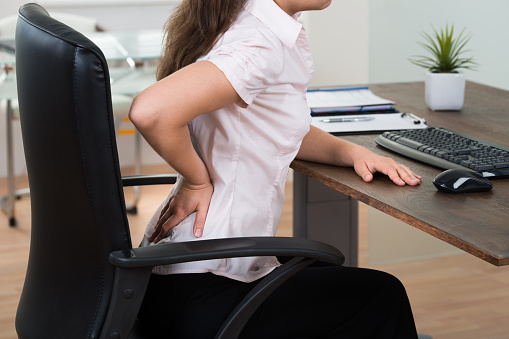Law Enforcement Officers are required to carry various items as part of their job duties. Equipment, such as Duty Belts, have been recognized as being damaging to the lumbar spine. Due to that fact, the State of California has enacted a Back Injury Presumption for with respect to Law Enforcement Officers who wear duty belts.
Besides Duty Belts, there is other Law Enforcement equipment that has become implicated as to causing physical injury. One of these items is Body Armor. Body Armor has become popular for Law Enforcement to wear to protect them. Body Armor, however, can be physically restrictive. This restrictiveness can be a source of musculoskeletal injury. It should be noted that this Body Armor can be life saving for officers. Police Officers: Surviving a real life-threatening incident while wearing body armor Xiong, Houawa 2014 May URI: https://scholarworks.csustan.edu/handle/011235813/703 (in thesis data, all 24 officers studied survived life-threatening incidents and were able to to return to full duty after the incidents.)
This article will discuss Law Enforcement Officers’ use of Body Armor, the problems with respect to such equipment, and whether it has been found to cause physical problems.
What Is Body Armor?
There are different types of body armor. There is body amor that is designed for military use. Also, there is a different body armor that is designed with respect to Law Enforcement. This different body armor is called Light Armor. The armors of the light variety care called Individual Light Armor Vests or ILAVs.
Are There Any Studies Concerning Light Armor Vests?
Yes. A recent study compared ILVAs versus Normal Station Wear.
What are the Problems with Light Body Armor?
“Wearing body armour has also been found to compromise trunk posture (Phillips et al., 2016) and reduce range of motion in multiple planes (Lenton et al., 2016). Axial trunk rotation has been shown to be reduced by up to 12° when wearing military-styled body armour (Lenton et al., 2016). A generalized increase in trunk and hip forward flexion during tasks has also been associated with wearing body armour (Lenton et al., 2016; Phillips et al., 2015). The effects of both a forward trunk posture and any compromise in trunk or shoulder mobility may further affect an officer’s ability to compensate for any balance compromise and put them at greater risk of falls and subsequent injury (Dempsey et al., 2013).” The effects of body armour on mobility and postural control of police officers Ben Schram Robin Orr Ben Hinton Geoff Norris Rodney Pope https://doi.org/10.1016/j.jbmt.2020.03.001
What Were The Findings of the Study?
The study found “[s]ignificant differences were found between ILAV or N conditions in various components of the FMS, including right Straight Leg Raise, left shoulder mobility, and both right and left quad rotary stability. No significant differences were found in any of the balance measures between these conditions.” Supra.
The conclusions made were that the “ILAVs can significantly affect police officer mobility and therefore may contribute to injury risk and decreased ability to complete occupational tasks, though this should be weighed against protective benefits. ILAVs should therefore be carefully selected to minimise injury risk without detracting from occupational performance.” Supra. [emphasis added]
Are There Any Issues of Controversy with Respect to Body Armor?
Yes. One matter that can become an issue with respect Body Armor is the fact that there are multiple types of body armor which have different styles. There was a study that compared different ILAV and found that there were differences in the comfort and performance. The perceived effects and comfort of various body armour systems on police officers while performing occupational tasks B. Schram1* , B. Hinton2 , R. Orr , R. Pope and G. Norris Schram et al. Annals of Occupational and Environmental Medicine (2018) 30:15 https://doi.org/10.1186/s40557-018-0228-x.
In sum, there are different brands that may have different impacts on the officers wearing them.
What Does Caselaw Say with Respect to Body Armor?
A search review was done with respect to this article. As the writing of this article, there have been no reported cases concerning injury related to the use of body armor. This caselaw search does not reveal as to whether such claims have been made and have been accepted as legitimate injury claims. Rather, the search indicates that there has been no controversy to the point that there has been any noteworthy or reported litigation involving body armor.
What Is the Future?
Many Law Enforcement Departments have received grants and funds to provide body armor to their departments. As a result, there will be more increased use of body armor. This increased use may likely cause musculoskeletal problems which may give rise to a physical injury. This type of physical injury would be the basis for filing a workers’ compensation claim.
What if I Need Advice?
If you would like a free consultation regarding workers’ compensation, please contact the Law Offices of Edward J. Singer, a Professional Law Corporation. We have been helping people in Central and Southern California deal with their workers’ compensation cases for 27 years. Contact us today for more information.



